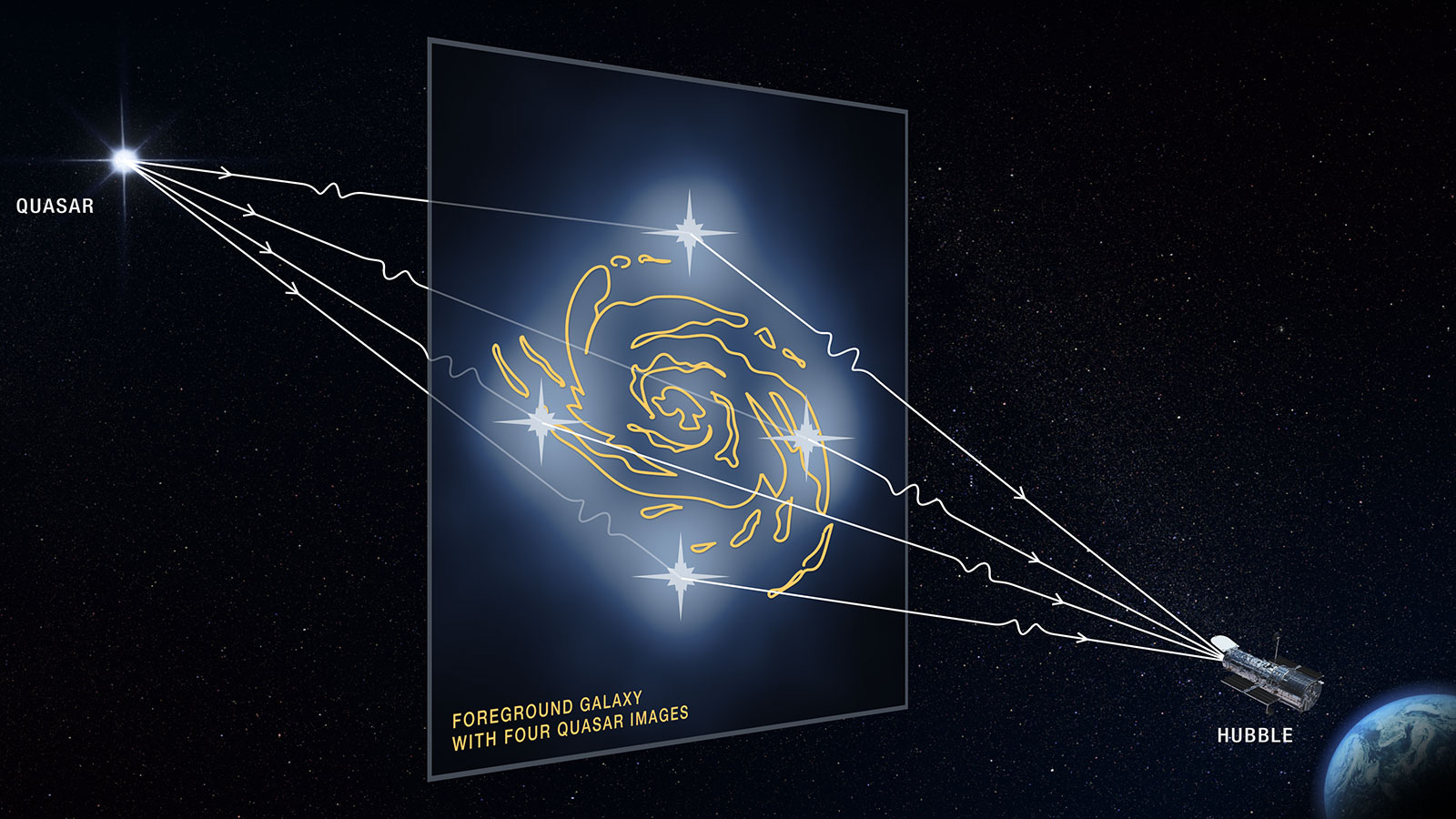These Dark Matter ‘Clumps’ Help Explain the Material That Makes Up Most of the Universe
Credit to Author: Becky Ferreira| Date: Fri, 10 Jan 2020 19:03:29 +0000
One of the biggest unsolved mysteries about our universe is why visible matter—the stuff that makes up planets, stars, and galaxies—is far exceeded by a weird non-luminous substance called dark matter. While scientists don’t know what dark matter is, they have inferred that it exists by its influence on observable phenomena, such as gravitational interactions between galaxies.
Now, a team of astronomers has shed new light on this shadowy substance with the detection of the smallest known dark matter “subhaloes and haloes,” which are terms for the clumpy shape dark matter takes. The discovery was announced this week at the American Astronomical Society meeting in Hawai’i, and is described in a recent study in the Monthly Notices of the Royal Astronomical Society.
The detection provides new support for the “cold dark matter” theory, which suggests that this elusive material is relatively cold and moves much slower than the speed of light, in contrast with the “warm dark matter” theory.
"Astronomers have carried out other observational tests of dark matter theories before, but ours provides the strongest evidence yet for the presence of small clumps of cold dark matter,” said study co-author Anna Nierenberg, an astrophysicist at NASA's Jet Propulsion Laboratory, in a statement. “By combining the latest theoretical predictions, statistical tools and new Hubble observations, we now have a much more robust result than was previously possible."
So just how small are these dark matter “clumps”? It’s useful to compare them to the Milky Way, our galaxy, which is about 1.5 times trillion times as massive as the Sun. Scientists estimate that the Milky Way’s dark matter halo accounts for up to 95 percent of our galaxy’s total mass. The dark matter halos detected in this new study are about 10,000 to 100,000 times smaller than the Milky Way’s halo.
Scientists normally study dark matter halos by observing how they influence luminous objects like starry galaxies, but these tiny halos are way too small to be detected by starlight. Instead, the team relied on gravitational lensing, a mind-boggling observational technique that exploits the distortion of light by the gravitational fields of massive objects that it passes through before getting to Earth.

The researchers pointed the Hubble Space Telescope toward a group of quasars, which are ultra-bright galactic cores from the early universe. These quasars are located some 10 billion light years from Earth, but there is another galaxy positioned in front of them, from our point of view, only two billion light years away. The gravitational fields of the foreground galaxy warped light from the quasars, splitting it into four copies like a prism, which provided the team with a close-up picture.
The effect is like “a giant magnifying glass," said lead author Daniel Gilman, an astrophysicist at UCLA, in a statement. "Small dark matter clumps act as small cracks on the magnifying glass, altering the brightness and position of the four quasar images compared to what you would expect to see if the glass were smooth.”
The Hubble images enabled the team to estimate the size of the dark matter haloes. Those mass estimates “agree with the predictions of cold dark matter,” according to the study, which is entitled: “Warm dark matter chills out.”
The results yield new insights into dark matter, but they are only one small piece of a giant scientific puzzle that has baffled scientists for decades.
This article originally appeared on VICE US.